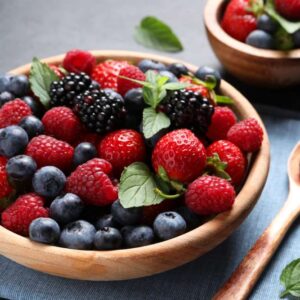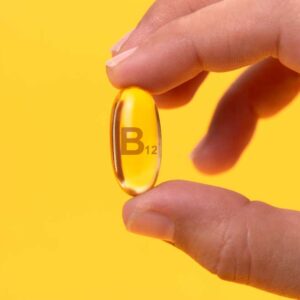
What the Heck Is Stevia?
Confession: I’m easily addicted to the sweet stuff.
Sugar, artificial sweeteners, stevia. Your other Living Well Daily editor, Nate Rifkin, can attest that I can chew through half a pack of Extra a day.
It’s really bad.
In my search for a healthier sweetener that isn’t as caloric as sugar and isn’t artificial like aspartame or sucralose (Splenda), I came across stevia. You too have probably seen it lately popping up as the new best “natural sweetener”.
In fact, it seems many of you share my sweet tooth, because you wrote in asking about stevia.
So what is stevia, exactly?
Stevia rebaudiana Bertoni is a plant that commonly grows in tropical regions in South America and Asia. It was discovered over 1,500 years ago in Paraguay, where the natives chewed on stevia leaves for its sweet taste and to help freshen their breath. They also added it to their teas and used it as a tonic to settle an upset stomach.
During the sugar shortage of WWII, the NIH began researching stevia. But once the war was over, their interest in stevia dropped. Japan picked up where the NIH left off, and by 1982, stevia made up a 40% share of the commercial sweetener market in Japan.
Today, it’s continuing to be studied for its safety and health benefits and is making its way into many products, including Pepsi’s new soda, Pepsi True. (But don’t let the green packaging fool you: It still has 60 calories of pure sugar that you’re better off without.)
The two main components of stevia that give it the sweet taste are steviosides and rebaudiosides. Many of the stevia products on the market are rebaudioside extracts, since the steviosides can give a bitter aftertaste.
Since stevia is marketed as being “natural,” that must mean it’s safe, and certainly better than artificial sweeteners, right? Well, the truth is that some of the stevia packets you find in your grocery store aren’t exactly natural stevia.
There are actually four different types of stevia:
- The whole plant.
- The whole plant leaf dried and powdered (about 30-40 times sweeter than sugar).
- Liquid or powdered stevia rebaudioside extract (up to 200 times sweeter than sugar).
- And products like Coca-Cola’s Truvia, which are refined stevia mixed with erythritol (or sometimes maltodextrin) and “natural flavors.” (About 400 times sweeter than sugar.)
At a glance, Truvia doesn’t sounds so bad. It’s just three ingredients.
Well… I found Coca-Cola’s patent for refining the rebaudioside from stevia, and it looks to be anything but natural (U.S. Patent # 20070292582 A1). Creating Truvia involves an extensive refining process that even includes mixing it with methanol (which the CDC calls a “toxic alcohol”).
In addition, erythritol is the byproduct of yeast fermentation of corn. As for “natural flavors”, well, they can be derived from bugs and the anal scent glands of beavers.
And while that’s technically natural, it’s not exactly appetizing, is it?
Other commercial stevia products you may find in the grocery store are mixed with maltodextrin to help make it a powder form. Maltodextrin can be made from GMO corn.
Yikes.
Though it’s probably a better option than toxic aspartame, if you want to give stevia a shot, steer clear of Truvia and other brands that use ingredients like rebaudioside A, erythritol and maltodextrin.
But what about safety of the not-so-refined stuff? Well, research is indicating that true stevia might actually have a bunch of health benefits. Stay tuned, because in the next issue of Living Well Daily, I’m going to cover the health benefits of stevia and point you to the best brands to buy.
To living well,
Jasmine LeMaster
View More Free Articles
Four Carbs that Could Add YEARS to Your Life
You’ve likely been avoiding carbs like the plague. Health gurus, fitness influencers, and diet books have convinced you that carbs are the enemy—that they spike your blood sugar, pack on pounds, and fast-track you to diabetes. So you’ve eliminated bread, sworn off pasta, and feel guilty just touching a piece of fruit. But what if...
Upgrade from Bananas and Apples to These Powerhouse Fruits
I’m often asked which fruits are the best. So, let’s talk about it. I’ll cut right to the chase: berries win this contest hands down. If you’re limiting your options to apples and bananas, you’re missing out on a universe of superior antioxidant power. Those everyday fruits are like bringing a knife to a gunfight...
The REAL Reason Americans are Getting “Fatter”
You’ve heard it a thousand times: “Americans are getting fatter because we’re lazy.” We sit at desks all day. We binge-watch Netflix instead of hitting the gym. We’ve traded physical labor for sedentary lifestyles. It’s a tidy explanation for why obesity has skyrocketed in developed countries. There’s just one problem—it’s completely wrong… A groundbreaking Duke...
Mailbag: Room Won't Stop Spinning? Do THIS First
“I’m dealing with vertigo issues, lightheadedness, and dizziness. As recently as this last Saturday I had multiple occurrences throughout the day. Is there anything I can do for this? I’m 69 and in good health. I work out 4 to 5 times a week.” —Spinning Hi Spinning, When patients approach me with similar complaints, I...
Hidden Number Secretly Sabotages Male Performance
Guys (and gals that love them), we should talk. You know how we’ve always been told that bedroom troubles are just part of getting older—that we just need to live with them? Well, it turns out that’s not true. Scientists recently wrapped up a six-year study that followed over 100 healthy men, and the findings...
Shocking Study Links Kids' Snacks to Dangerous Early Puberty
Kids are growing up in a world vastly different from the one we knew. Back in our day, if a child wanted something sweet, it was a piece of candy or a homemade cookie. Today’s kids are surrounded by products filled with artificial sweeteners that didn’t even exist when we were raising our own children....
Outdated Vitamin Guidelines Put Your Brain at Risk
If you’re like most people, you probably don’t think twice about vitamin B12—until your doctor mentions it during a routine blood test. But new research published in the Annals of Neurology suggests we need to pay closer attention to this crucial nutrient—especially as we age. Turns out, current guidelines for this essential nutrient might be...
The TRUTH About Supplement "Liver Dangers" REVEALED
There’s been a lot of buzz lately about liver damage from supplements—so, let’s talk about it. Reports of supplement-induced liver injuries have some folks wondering, “Could my natural remedy actually be harming me?” But before you toss all your supplements in the trash, let’s separate fact from fear—and talk about how to use supplements safely....
The 10,000 Steps LIE That's Ruining Your Health
I’ll be honest—I’m a little sick of the 10,000-steps theory. You know, the one that insists you need to take at least that many steps daily to stay healthy? You won’t believe where that claim originally came from. The 10,000-steps theory wasn’t handed down from the fitness gods on stone tablets. It originated from a...
“Brain Games” Failed You? Try THIS For Better Memory Instead
You know all those brain-training apps, supplements, and “miracle” memory-boosters that promise to keep your brain sharp as you age? Here’s the truth… There IS evidence they support brain health—and that’s why I’ll be the first to recommend them. But they aren’t the most powerful brain-boosting tool available to you. Another surprising solution has earned...









